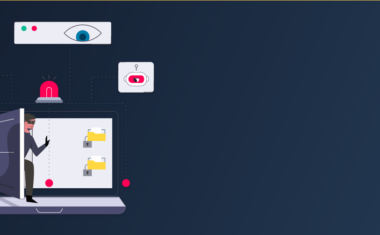Which UX Career Path Is Right For You? 5 UX Design Roles for Every Type of Designer

In this article
User experience design continues to be a booming field, with a LinkedIn report revealing that UX design hires jumped 5X from 2019 to 2020, and that UX design skills are among the most in-demand skills that hiring managers look for. As more and more organizations undergo a digital transformation and understand the importance of good design to a positive user experience, the career opportunities—as well as salaries—for UX professionals are also expected to grow.
UX professionals typically work within design teams, but the field of UX design includes a diverse range of disciplines that each use different skill sets, require different backgrounds, and offer a variety of different paths for career development and growth. Read on to learn more about the types of design work done by UX professionals and the kind of role that best fits your profile.
How To Choose a UX Design Career Path

Most people associate the UX profession with design. And while many user experience designers have a background in visual, graphic, and product design, the UX field has in recent years branched out into different areas of specialization, offering opportunities for those with expertise in research, writing, information architecture, engineering, and management.
Each discipline involves its own set of skills, answers to different stakeholders, and focuses on a different part of the user experience. The thing that connects them all is a sense of curiosity, a willingness to accept feedback, and a passion for crafting experiences that are intuitive, accessible, and meet users’ needs.
UX Design Roles for Visual Thinkers and Problem-Solvers

Roles: UX Designer / Visual Designer
UX designers and visual designers both use graphic design and visual elements to solve user experience problems. Where a UX designer might create sketches, wireframes, and prototypes to model and test products and websites to ensure the best user experience, visual designers flesh out the UX designer’s wireframes with design elements that both adhere to brand guidelines and maximize for usability.
Skills: Graphic design skills, proficiency with tools such as InVision, Sketch, Adobe Photoshop, Adobe Illustrator, a strong sense of visual aesthetics, empathy for users
Salary range: The average salary for an entry-level UX designer is around $79,000, according to Glassdoor. The average salary for a senior-level UX designer is around $113,109.
Get To Know Other Design Students
Amber Hicks
UX Designer at Norfolk Southern
Pete Bruno
Product UX Designer at Service Management Group
Arin Soukoule
Design Experience Analyst at Accenture Interactive
UX Design Roles for the Multidisciplinary and Collaborative Do-it-All
Role: Product Designer
Product designers are often referred to as “full-stack” UX professionals—where UX/UI designers prioritize the needs of the user, product designers are able to juggle both user and stakeholder needs and can oversee a project from start to finish. They are often strong ideas people who can conceptualize a product, identify problems and solutions, prototype, code, and figure out ways to deliver a project on time and on budget.
Skills: Graphic design skills, prototyping, interaction design, user interface design, coding, project management, incorporating insights from UX research, strong communication
Salary range: The average salary for an entry-level product designer is around $91,760, according to Glassdoor. The average salary for a senior-level UX product designer is around $118,724.
UX Design Roles for the Curious Knowledge-Seeker
Role: UX Researcher
UX researchers perform the critical work of understanding the user experience so that design teams can make informed decisions. Through research methods such as usability testing, interviews, conducting focus groups and surveys, and observing human-computer interaction, UX researchers gather information on user behaviors, motivations, and needs so that design teams know what’s working, what needs improvement, and what needs to be reimagined entirely.
Skills: Qualitative and quantitative user research methods, user testing, behavioral analysis and statistics, ability to create user flows and journey maps, ability to wireframe and sketch ideas, strong communication, strong empathy, experimentation
Salary range: The average salary for an entry-level UX researcher is around $82,706, according to Glassdoor. The average salary for a senior-level UX researcher is around $119,889.
UX Design Roles for the Experimental Wordsmith

Role: UX Writer
UX writers write all the copy that a user encounters when they visit a website, use an app, or engage a service. From the text that describes a company to the words on a page that encourage users to login, sign-up, buy now, register, post, share, and save, UX writers develop an understanding of their target audience, A/B test their copy, and use words to help both users and organizations achieve their goals.
Skills: Strong and clear written communication, concision, ability to incorporate findings from user research, analytical, strong attention to detail, collaborative
Salary range: The average salary for an entry-level UX writer is around $74,778, according to Glassdoor. The average salary for a senior-level UX writer is around $96,051.
UX Design Roles for the Analytical Organizer
Roles: UX Analyst / Information Architect
While UX analysts and information architects have different responsibilities—the former focuses on user satisfaction and helps organizations meet usability requirements; the latter creates the structures and flows (i.e. information architecture) of websites and apps, ensuring that all content and data is accurate categorized and tagged—both roles require a keen attention to detail, an analytical mind, and the patience to understand users’ expectations and needs.
Skills: Strong attention to detail, critical and analytical thinking, clear communication, and organization skills. UX analysts also need to be versed in UX research methodologies, while information architects need to know how to develop labeling and navigation systems, be familiar with search schemas, metadata, and taxonomy.
Salary range: The average salary for an entry-level information architect is around $94,452, according to Glassdoor. The average salary for a senior-level information architect is around $121,244. The average salary for an entry-level UX analyst/usability analyst is around $82,706, according to Glassdoor. The average salary for a senior-level UX analyst/usability analyst is around $107,473.
Since you’re here…
Interested in a career in UX design? Rise to the top of the CV pile when you enroll in our UX Bootcamp—you’ll get a UX job or your tuition money back. Take a look at our student reviews and test out our free UX curriculum to get a feel for our style and results. TL;DR: average starting salaries for our students = $85,440. Let’s do this.





